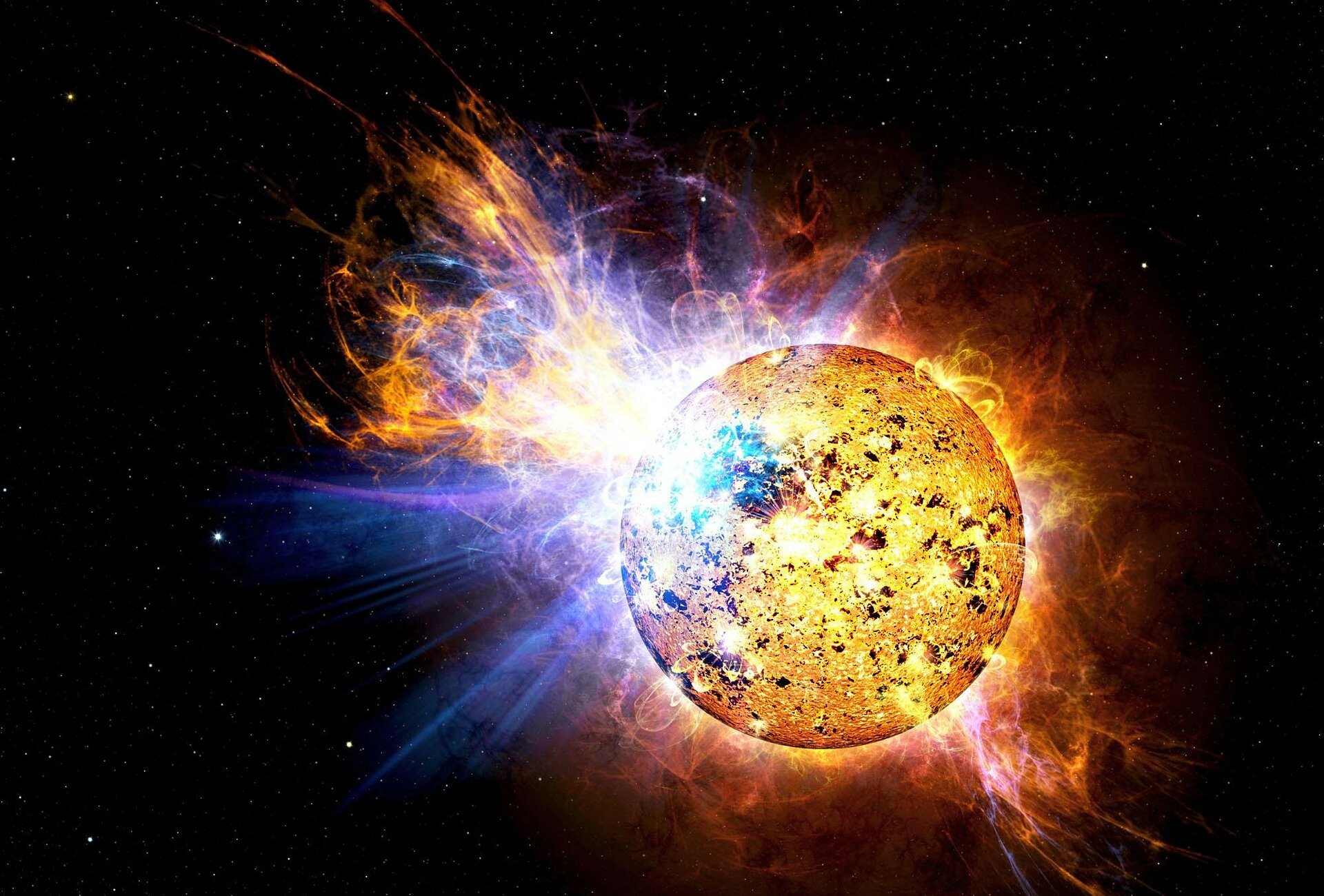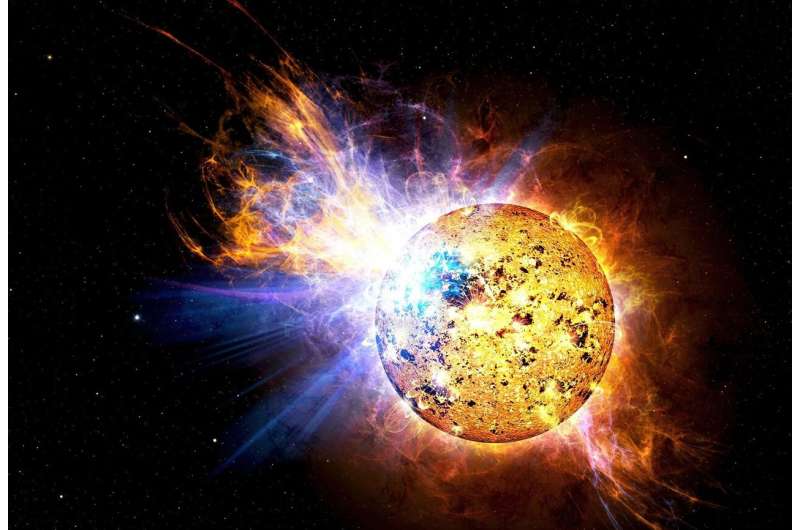

A massive eruption of solar material, known as a coronal mass ejection or CME, was detected escaping from the sun at 11:36 p.m. EDT on March 12, 2023.
The CME erupted from the side of the sun opposite Earth. While resarchers are still gathering data to determine the source of the eruption, it is currently believed that the CME came from former active region AR3234. This active region was on the Earth-facing side of the sun from late February through early March, when it unleashed fifteen moderately intense M-class flares and one powerful X-class flare.
Based on an analysis by NASA’s Moon to Mars Space Weather Office, the CME was clocked in traveling at an unusually fast 2,127 kilometers (1,321 miles) per second, earning it a speed-based classification of a R (rare) type CME.
A simulation of the CME below shows the blast erupting from the sun (located at the middle of the central white dot) and passing over Mercury (orange dot). Earth is a yellow circle located at the 3 o’clock position.
The eruption is likely to have hit NASA’s Parker Solar Probe head-on. The spacecraft is currently nearing its 15th closest approach of the sun (or perihelion), flying within 5.3 million miles (8.5 million kilometers) of the sun on March 17. On March 13, the spacecraft sent a green beacon tone showing the spacecraft is in its nominal operational mode. The scientists and engineers are awaiting the next data download from the spacecraft, which will occur after the close approach, to learn more about this CME event and any potential impacts.
The eruption is known as a halo CME because it appears to spread out evenly from the sun in a halo, or ring, around the sun. Halo CMEs depend on the observer’s position, occurring when the solar eruption is aligned either directly towards Earth, or as in this case, directly away from Earth. This expanding ring is apparent in the view from NASA/ESA’s Solar and Heliospheric Observatory, or SOHO, spacecraft shown below. SOHO observes the sun from a location about 1 million miles closer to the sun along the sun-Earth line. In SOHO’s view, the sun’s bright surface is blocked to reveal the much fainter solar atmosphere and erupting solar material around it. The bright dot on the lower right side of the image is Mercury.
Even though the CME erupted from the opposite side of the sun, its impacts were felt at Earth. As CMEs blast through space, they create a shockwave that can accelerate particles along the CME’s path to incredible speeds, much the way surfers are pushed along by an incoming ocean wave. Known as solar energetic particles, or SEPs, these speedy particles can make the 93-million-mile journey from the sun to Earth in around 30 minutes.
Though SEPs are commonly observed after Earth-facing solar eruptions, they are less common for eruptions on the far side of the sun. Nonetheless, spacecraft orbiting Earth detected SEPs from the eruption starting at midnight on March 12, meaning the CME was powerful enough to set off a broad cascade of collisions that managed to reach our side of the sun. NASA’s space weather scientists are still analyzing the event to learn more about how it achieved this impressive and far-reaching effect.
Provided by
NASA’s Goddard Space Flight Center
Citation:
Powerful solar eruption on far side of sun impacts Earth (2023, March 15)
retrieved 15 March 2023
from https://phys.org/news/2023-03-powerful-solar-eruption-side-sun.html
This document is subject to copyright. Apart from any fair dealing for the purpose of private study or research, no
part may be reproduced without the written permission. The content is provided for information purposes only.